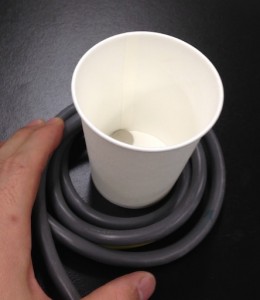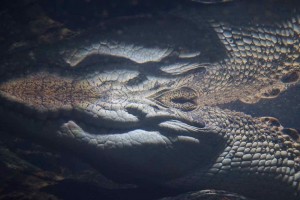The Invisible Water Balls: Unlocking the Secret of Super Absorbent Polymer and Light Refraction
I’m Ken Kuwako, your Science Trainer. Every day is an experiment.
What do you think is inside this glass jar?
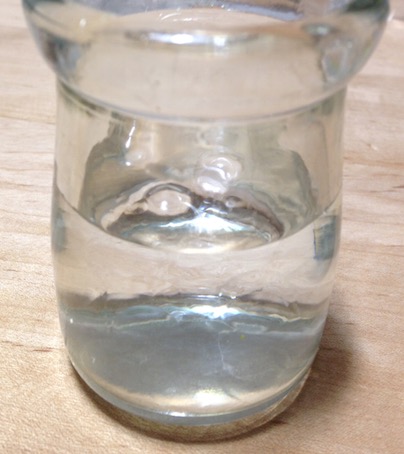
“Huh, an empty jar with nothing in it…?”
No, you’d be wrong. This jar is actually packed with squishy, jelly-like balls! It’s like a ninja’s “art of vanishing” or a chameleon’s “camouflage,” isn’t it? Today’s science recipe is an experiment using the Super Absorbent Polymer (SAP) that I mentioned wanting to try yesterday. I immediately bought some from a dollar store and tried it at home.
This fascinating substance truly vanishes like a ninja. Why does it disappear in plain water but become visible in a different liquid? I’ll summarize the experiment method and results, including the secret behind this “light magic”!
The Science Recipe
What You’ll Need:
Super Absorbent Polymer (SAP)
Glass jar (or clear cup) x 2
Pitcher x 2
Plain water
Sugar water (water with a generous amount of sugar dissolved in it)
At a dollar store, Super Absorbent Polymer is often sold under the name “Magic Jelly for Growing Plants.”
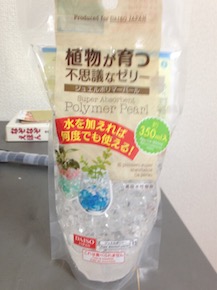
When magnified, it looks like this:
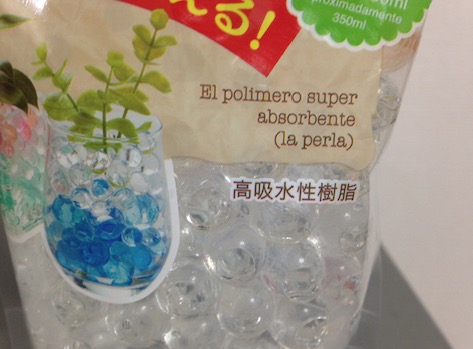
It’s a squishy, bouncy material that kids are sure to love. This substance is actually the hero inside disposable diapers, firmly absorbing moisture and turning it into a gel. For this experiment, we’ll use the gardening type.
Experiment Procedure
Prepare two glass containers. Place the same amount of Super Absorbent Polymer (in its water-swollen state) into each. Fill two pitchers with plain water and sugar water, respectively. Pour the sugar water into one container and the plain water into the other, until the balls are fully submerged. Check the difference between the two.
Experiment Results: Now You See Them, Now You Don’t?
I’ve put together a video for you. Take a look.
The jar on the left has plain water, and the one on the right has sugar water. What do you notice? You can clearly see the squishy balls in the sugar water. On the other hand, the balls in the plain water are almost invisible.
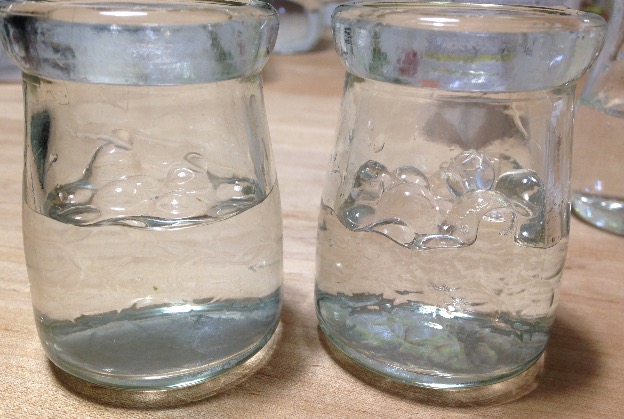
Looking from above, the difference is obvious at a glance.
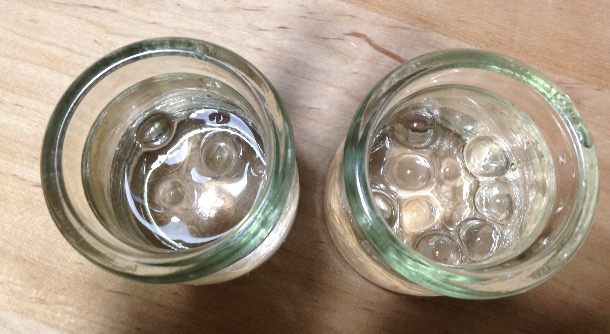
The one submerged in water is perfectly hidden, like a chameleon or perhaps a ninja.
Why? The Ninja’s Secret is “Light Refraction”
Why does it become invisible in plain water but visible in sugar water? The secret behind this magic is a property called the “refractive index” of light.
When light travels from one medium to another (for example, from air into water), its path bends. It’s the same phenomenon that makes a straw placed in a glass of water appear bent at the surface—that’s refraction. We are able to recognize the “shape” of an object because light reflects or refracts off its surface and enters our eyes.
[In the Case of Water: Why it Disappears]
When the Super Absorbent Polymer absorbs a lot of water, its refractive index becomes nearly identical to that of water. For light, the “water” and the “polymer ball” are practically the same medium. The light barely bends (refracts) or bounces back (reflects) when passing through the ball’s surface; it just passes straight through.
That’s why the outline of the ball becomes invisible to our eyes, making it appear as if it has vanished. Perfect camouflage!

[In the Case of Sugar Water: Why it’s Visible]
On the other hand, dissolving sugar in water changes the liquid’s refractive index (it becomes higher than that of plain water). This creates a difference (discrepancy) in the refractive index between the “polymer ball (which is close to water)” and the “surrounding liquid (sugar water).” Light clearly refracts and reflects at the boundary where this “difference” exists. This is why the ball’s outline becomes distinctly visible to our eyes.
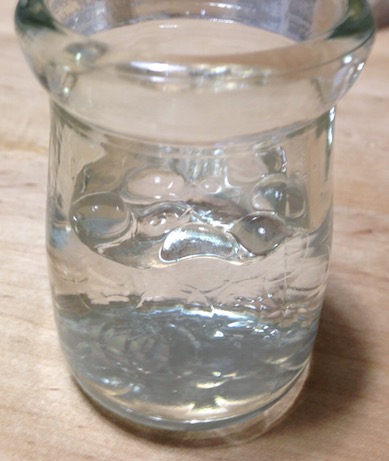
This is perfect for a lesson on the refraction of light!
Ninja Magic at Home!
I filmed this experiment at home, but of course, you can easily do it at your own house. Supplies from a dollar store are perfectly fine. It’s an experiment your children will absolutely love. Imagine saying, “Look, there’s nothing in here,” and then casually pouring out the water, only to have countless squishy balls tumble out! You’re guaranteed to see some astonished faces. Give it a try!
Contact and Requests
Make the wonder and fun of science more accessible! We clearly explain enjoyable science experiments you can do at home and the tips for performing them. Feel free to search around!
・The content of the Science Idea Notebook is now a book. Find out more here ・About the administrator, Ken Kuwako: here ・For various requests (writing, lectures, experiment classes, TV supervision/appearances, etc.): here ・Article updates are posted on X!
![]() We stream experiment videos on the Science Idea Channel!
We stream experiment videos on the Science Idea Channel!

